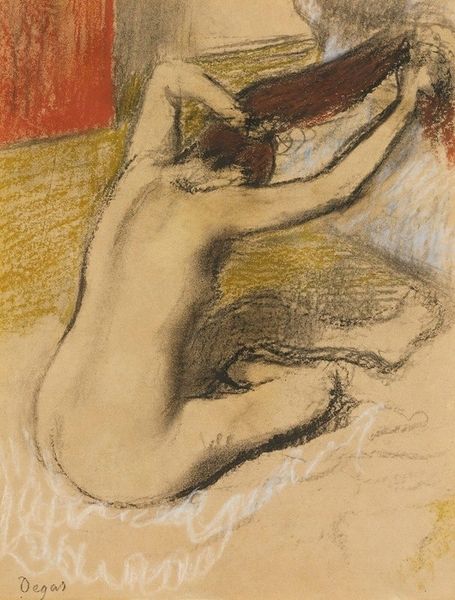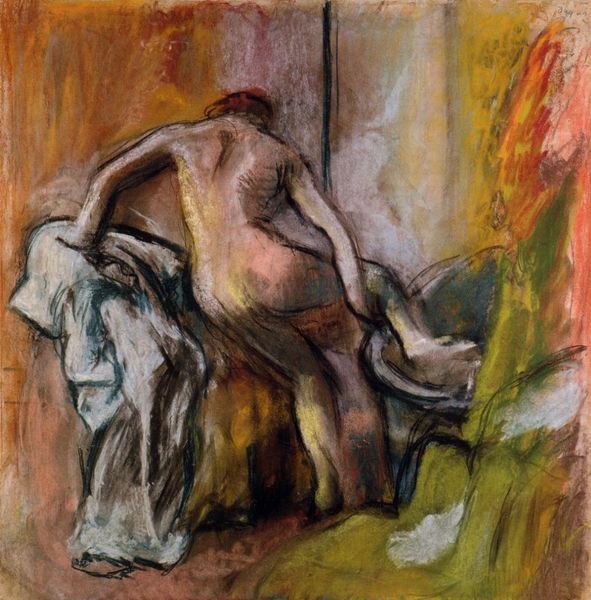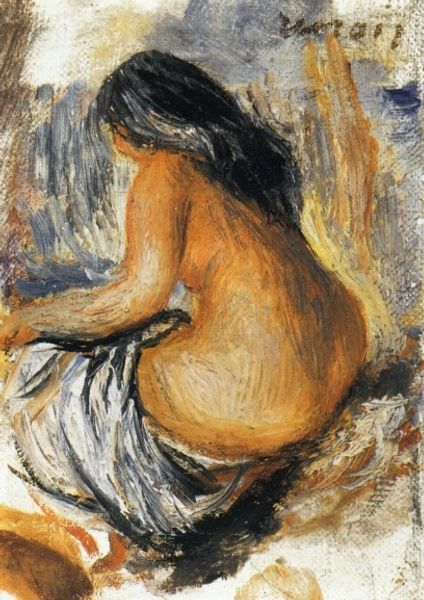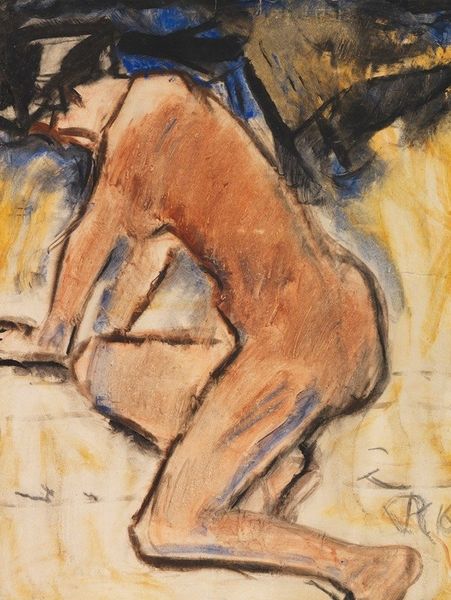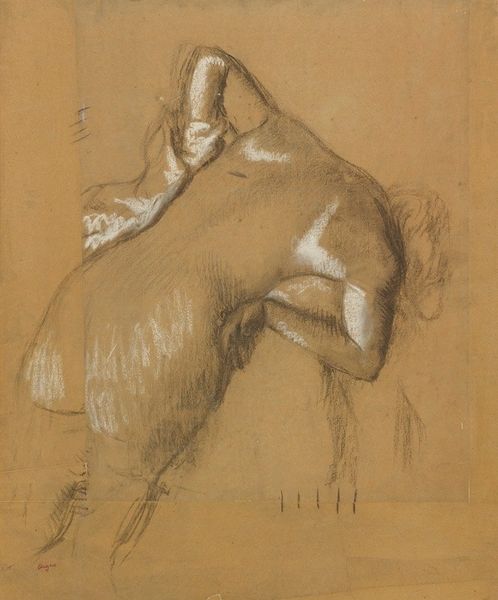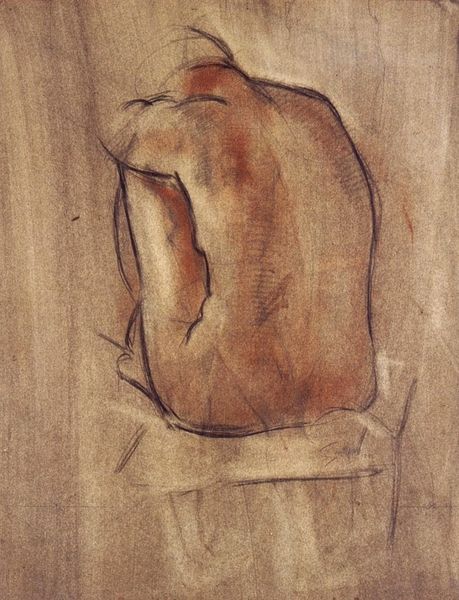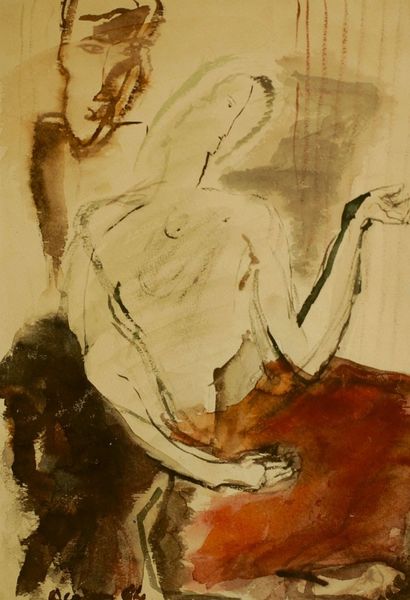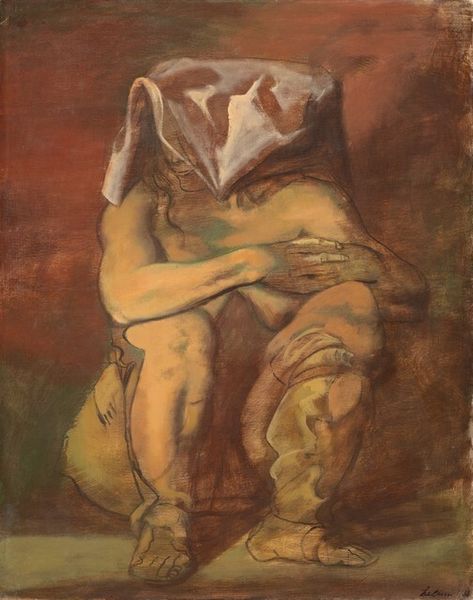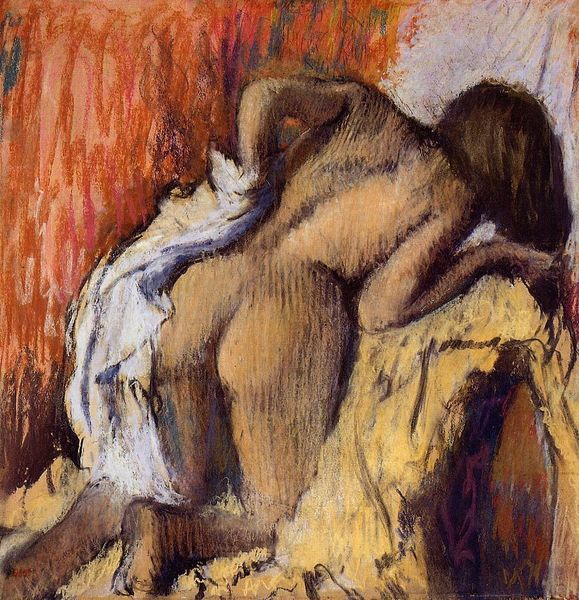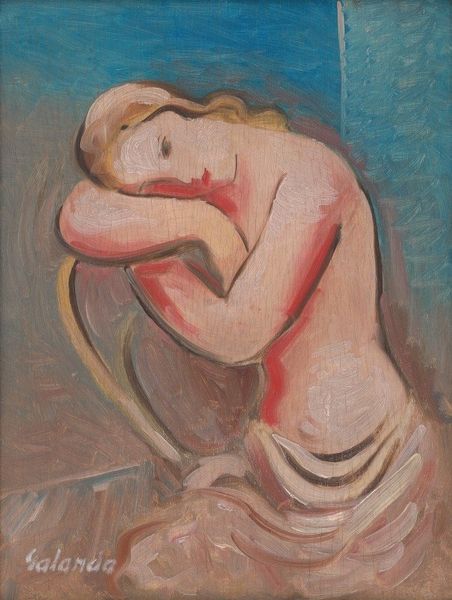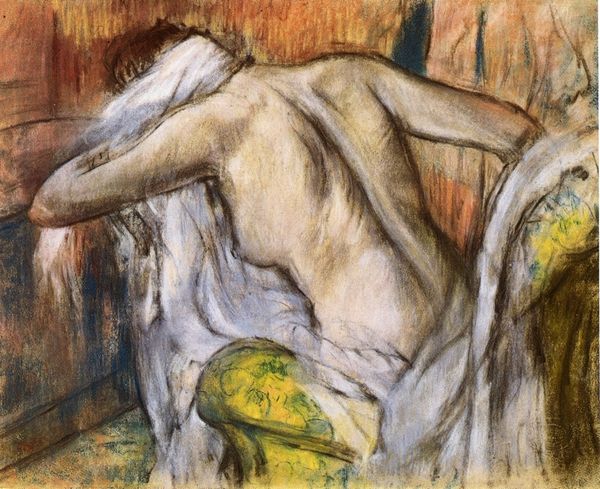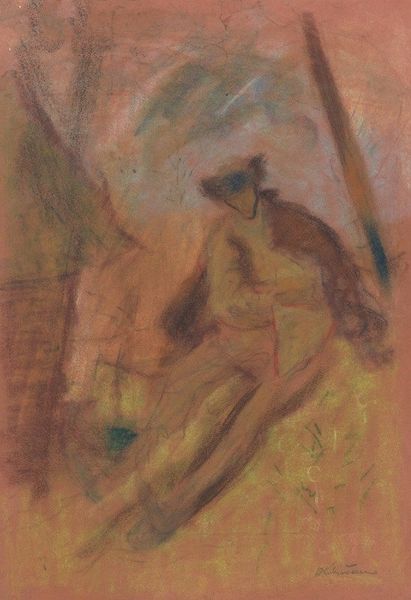
Copyright: Public Domain: Artvee
Curator: Here we have Edgar Degas’s “Après le bain, femme s’essuyant,” created around 1892, a work rendered in charcoal and pastel. Editor: My goodness, the composition feels so intimate, voyeuristic almost. The use of brown and coral chalk gives such a unique warmth and shows, the tension of the human form with stark highlights and rough lines. Curator: Degas was fascinated by the human form in motion, particularly women performing mundane, private acts, and in his later works, you'll see him tilting increasingly toward these looser strokes. It's clear he was working out formal problems and spatial tension, exploring line and shape beyond conventional aesthetics. Editor: I suppose... But I also see vulnerability, an honesty, beyond just pure composition! Her hunched pose, it’s as if Degas captured a fleeting moment of privacy, that liminal space between bathing and returning to the world. Curator: Certainly, the thematic focus emphasizes quotidian subject matter, an observation of everyday life without idealization, you can find resonance in much of French Impressionism, though Degas resists certain conventions of the movement itself. It is much less about colour as it is about light, volume, and depth here, a constant interplay of lines which construct depth. Editor: It's evocative—and a bit melancholic, like looking at something never meant for viewing. You know, the unfinished quality enhances that feeling. The strokes aren't precisely blended but feel so deliberately chosen, lending this vulnerable tone to it. Curator: He certainly emphasizes gesture over detail. If you trace your own gaze, the lines follow very clear spatial organization. It seems a work driven by analytical rigor, one should be more analytical towards how that emotion comes to life as one examines it. Editor: Oh, I agree on the rigor, but I think it's less cold and more about accessing something real! The artwork evokes more that than it represents at face value. And even then I find myself wanting to say the coral hues he uses creates a tender ambiance around a raw, genuine depiction. Curator: Indeed, the hues play a role, adding warmth to what otherwise would be cold shades of charcoal and white pastel; the artwork is a sum of its components that is open for our continuous viewing. Editor: You're right, it's an experience. After all this analysis it makes me consider how perception, the emotion in perception, changes when someone views it.
Comments
No comments
Be the first to comment and join the conversation on the ultimate creative platform.
